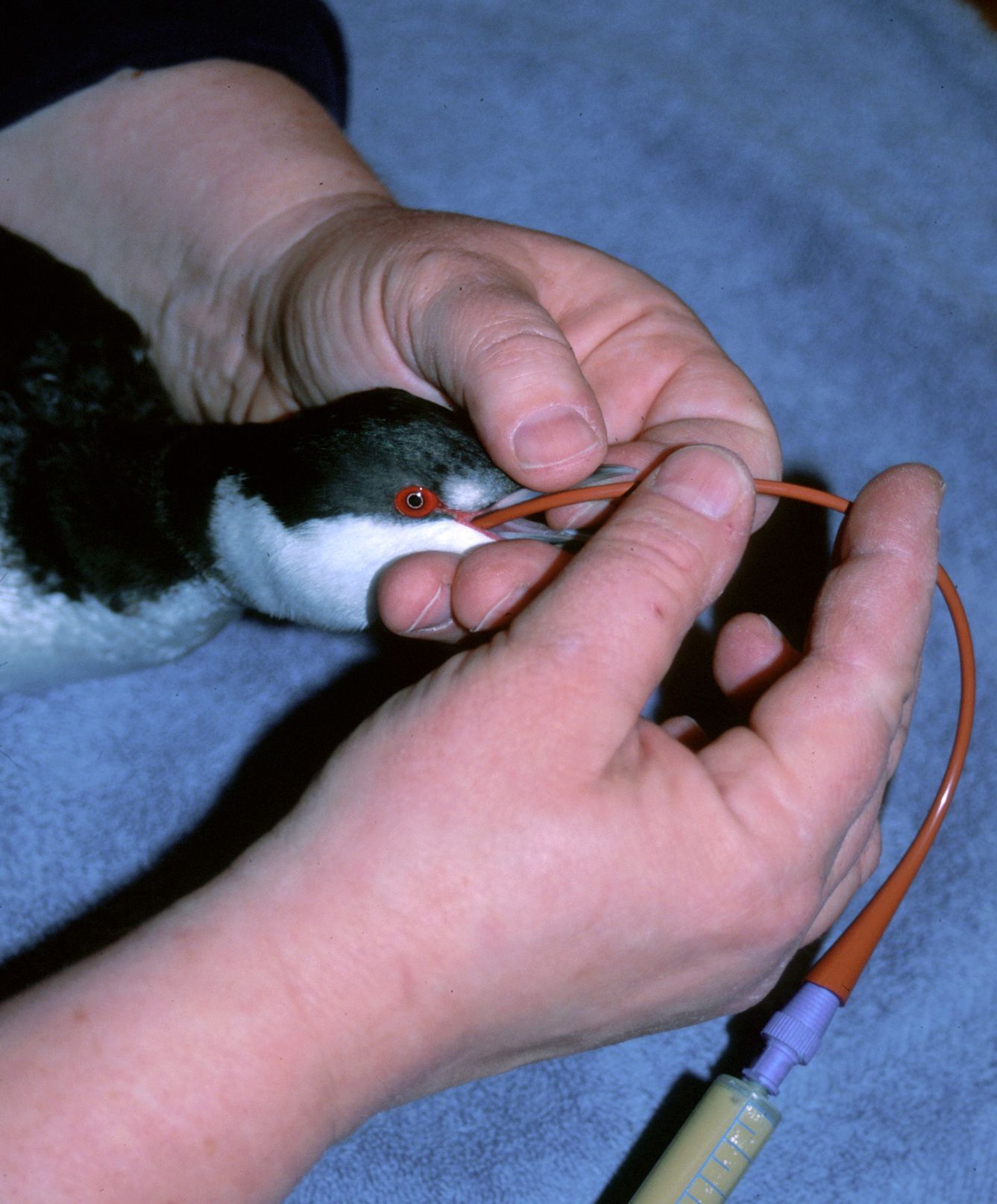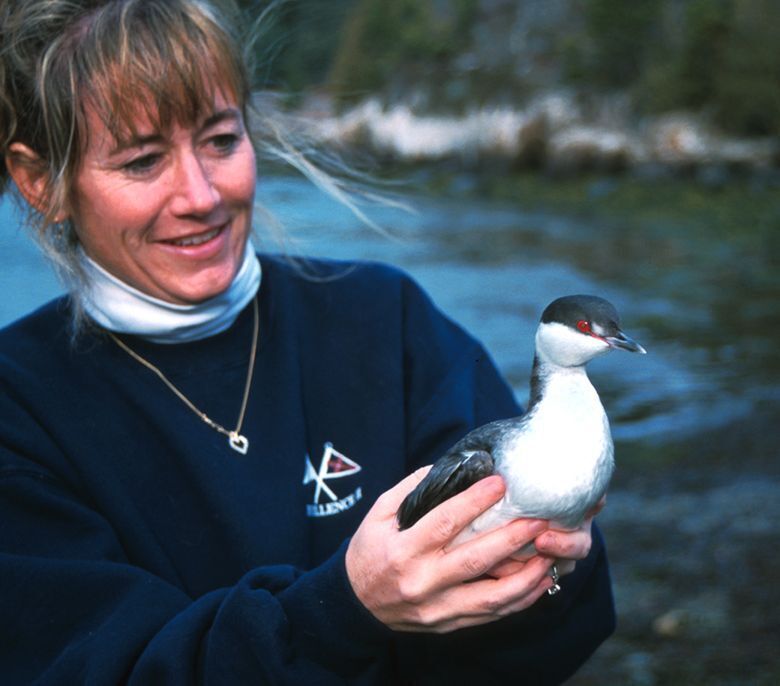Long ago when the calendar turned from 1999 to 2000, we went to a New Year’s Eve party. In the middle of the party a call came from a woman who had spent her New Year’s evening saving a Horned Grebe frozen in the ice. A grebe, like a loon and other seabirds, has legs at the back of its body making it very difficult to stand or fly. In addition, they have heavy little bodies. These features make them fabulous divers and swimmers, but clumsy when ashore. This little grebe needed a lot of open water to flap its way into the air, and it didn’t have it. The rescuer wore tall boots and broke her way through the ice until she reached the bird and broke it free. Then she called for help.
The grebe was starving and in shock, it had been unable to hunt for some time. So, our first task was to give it electrolytes and then liquid food through a stomach tube down it’s throat. It was not easily going to eat on its own, so the stomach tube continued to be used every three hours.

Our second task was to get it waterproof, and it spent much supervised time in our bathtub. We no longer use our bathtub for patients but back then my kids were used to asking, “Is anyone in the tub?”, before they showered. When it was not completely waterproof it could quickly get soggy and sink down into the water. The waterproofing gives them literally a bubble of air as a floatation device so their heavy build is to project them through the water’s surface tension. Once underwater all the features which make them so clumsy on land make them shoot through the water after fish. When a bird is not completely waterproof it can get very cold and hyperthermic, so we rest them on a net frame which keeps them clean. Any feces on their feathers degrades the waterproofing.
Several weeks later, the grebe was released by its rescuer into the ocean.



